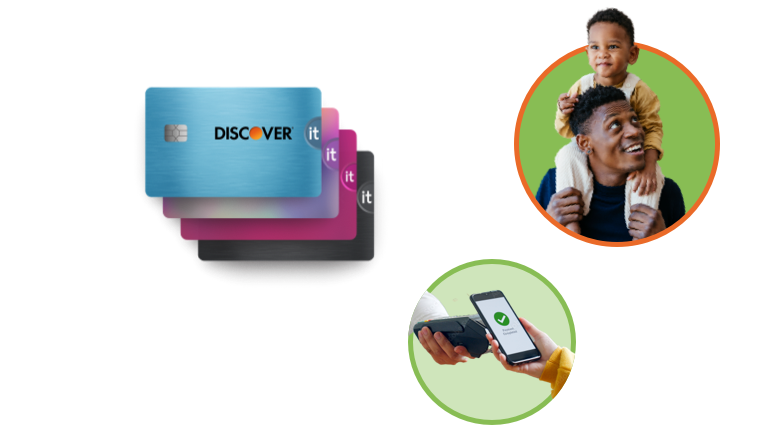Discover it® Balance Transfer Offer
Our lowest intro APR on balance transfers and purchases
With our Discover it® Cash Back Credit Card, get x% APR† for x months on balance transfers and purchases. x% Intro fee on balances transferred by .

How can balance transfer offers help you?

If you transfer a balance from a high-interest credit card to a Discover Card with an introductory 0% APR balance transfer offer, you can use the money you save on interest charges to pay down your debt.
When you consolidate all your higher-rate credit card debt--or other outstanding debts--with a Discover balance transfer offer, you end up with a single monthly payment and may reduce how much you pay in interest in the long run. Instead of making multiple payments to different debts every month, you can now make a single lump payment every month to Discover and pay down your consolidated debt.


Where can you find a balance transfer offer?
You may find balance transfer offers when you consider opening a new credit card account. In other cases, an existing credit card account might give you a balance transfer offer to use with your current line of credit. Either way, it’s important to know that even if you open a new account with a balance transfer offer, you might not always have a balance transfer offer on that credit card account. Card issuers evaluate customer accounts to determine whether a current customer is eligible for a balance transfer offer.


Cash Back Credit Cards
Intro purchase APR is x% for x months from date of account opening then the standard purchase APR applies. Intro Balance Transfer APR is x% for x months from date of first transfer, for transfers under this offer that post to your account by then the standard purchase APR applies. Standard purchase APR: x% variable to x% variable, based on your creditworthiness. Cash APR: x% variable. Variable APRs will vary with the market based on the Prime Rate. Minimum interest charge: If you are charged interest, the charge will be no less than $.50. Cash advance fee: Either $10 or 5% of the amount of each cash advance, whichever is greater. Balance transfer fee: x% Intro fee on balances transferred by and up to x% fee for future balance transfers will apply. Annual Fee: None. Rates as of . We will apply payments at our discretion, including in a manner most favorable or convenient for us. Each billing period, we will generally apply amounts you pay that exceed the Minimum Payment Due to balances with higher APRs before balances with lower APRs as of the date we credit your payment.
-
$0 Fraud Liability: An “unauthorized purchase” is a purchase where you have not given access to your card information to another person or a merchant for one-time or repeated charges. Please use reasonable care to protect your card and do not share it with employees, relatives, or friends. Learn more at Discover.com/fraudFAQ.
-
Online Privacy Protection: Online Privacy Protection is offered by Discover Bank at no cost and only available in the mobile app. About every 90 days we will scan at least 10 people-search sites for your online personal information and help you submit opt-out requests. Types of personal information found on these sites will vary.
-
Social Security number Alerts: Discover® Identity Alerts (Alerts) are offered by Discover Bank at no cost, are available only online, and do not impact your credit score. The Alerts currently provide: (a) daily monitoring of your Experian® credit report and an alert when a new inquiry or account is listed on your report; (b) daily monitoring of thousands of Dark Web sites known for revealing personal information and an alert if your Social Security Number is found on such a website. Alerts are only provided to Primary cardmembers who agree to receive them online and whose accounts are open, in good standing, have a Social Security Number, and an email address on file. This benefit may change or end in the future. Discover Bank is not a credit repair organization as defined under federal or state law, including the Credit Repair Organizations Act. To see a list of Frequently Asked Questions, visit discover.com/freealerts.













